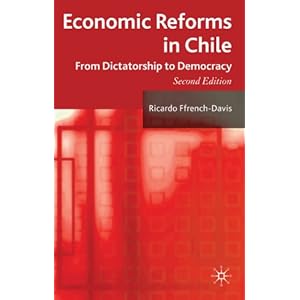REMEMBERING LUIS OMAR SALINAS (1937-2008)
By Felipe de Ortego y Gasca
I don’t remember the details exactly — how I came by the poetry of Luis Omar Salinas, suffice to say that in 1970 I negotiated with Washington Square Press to produce for them an anthology of Mexican American literature, and in the process I came across the publication of Crazy Gypsy which had been published that year. In that collection the poem that stood out for me is “Aztec Angel” rather than “Crazy Gypsy.” I wrote to Salinas and asked him for permission to include both poems in We Are Chicanos: Anthology of Mexican American Literature, to which he agreed.
which had been published that year. In that collection the poem that stood out for me is “Aztec Angel” rather than “Crazy Gypsy.” I wrote to Salinas and asked him for permission to include both poems in We Are Chicanos: Anthology of Mexican American Literature, to which he agreed.
Over the years, I’ve used “Aztec Angel” in my Chicano literature classes stressing it as a poem of self affirmation, though it has been described as a poem of alienation. What resonated for me in “Aztec Angel” are the last lines of the poem: “I am an Aztec angel / offspring / of a woman / who was beautiful,” a powerful statement of self-affirmation.
Perhaps that resonance was actuated by the fact that in 1970, I had completed an investigative piece on “Montezuma’s Children” detailing the dismal education Mexican Americans were receiving in the American schools of the Hispanic Southwest. The piece was published by The Center Magazine of the Robert Maynard Hutchins Center for the Study of Democratic Institutions as a cover story, read into the Congressional Record by Senator Ralph Yarborough, and recommended for a Pulitzer.
For too long, the most fair of us were heralded as “Coronado’s Children” when in fact we were “Malintzin’s Children,” (consort to Hernan Cortez, conquistador of Mexico) “off-spring of a woman who was beautiful.” So beautiful that in a letter in the Spanish archives, Cortez wrote that "After God we owe this conquest of New Spain to Doña Marina," as Malintzin came to be known. Though she died young, her two children with Cortez (the first mestizos, offsprings of the Spanish conquest of Mexico) outlived her — her daughter lived on toward the end of the 16th century.
In 1970, Salinas was 33, his stature as a poet still ahead of him. Long regarded as one of the founding fathers of Chicano poetry, Gary Soto who edited Salinas’ The Sadness of Days in 1987, said of Salinas in the Fresno Bee obituary “He was certainly a pioneering poet in the Mexican American literary scene. He was one of the first to put his stamp on Mexican American literature.” Along with Gary Soto, Ernesto Trejo, and Leonard Adame, Salinas is identified with the "Fresno School" of poets where all four studied with Philip Levine, Robert Mezey, and Peter Everwine. In 1965, Salinas studied with the poet Henri Coulette at Cal State Los Angeles who recommended him to Fresno State College.
in 1987, said of Salinas in the Fresno Bee obituary “He was certainly a pioneering poet in the Mexican American literary scene. He was one of the first to put his stamp on Mexican American literature.” Along with Gary Soto, Ernesto Trejo, and Leonard Adame, Salinas is identified with the "Fresno School" of poets where all four studied with Philip Levine, Robert Mezey, and Peter Everwine. In 1965, Salinas studied with the poet Henri Coulette at Cal State Los Angeles who recommended him to Fresno State College.
Though born in Robstown, Texas, in 1937, his poetic roots throve in the soil of Fresno, California. The poem “Crazy Gypsy” first appeared in Down in the Santa Fe Depot: Twenty Fresno Poets, 1970, then reprinted in Speaking for Ourselves: American Ethnic Writing  edited by Lillian Faderman and Barbara Bradshaw and published by Scott-Foresman. His academic studies are checkered with a stint here and a stint there, though it was at Fresno State College where he broke through in poetry.
edited by Lillian Faderman and Barbara Bradshaw and published by Scott-Foresman. His academic studies are checkered with a stint here and a stint there, though it was at Fresno State College where he broke through in poetry.
In all, like St John’s “Dark Night of the Soul,” Salinas thought of his poetry as an expression of the “dark side of the soul.” We talked about that aspect of his poetry when he came on November 5th of 2002 to the campus of Texas A and M at Kingsville where I was Visiting Scholar and Lecturer in English. The progress of his illness was already evident. But his presentation drew a great gathering, including his kin from Robstown and Corpus Christi.
Though frail on that visit, his presentation projected strength. Afterward, we gathered for dinner and continued our recollections of the past. We talked about Neruda and I shared with Omar my passion for Neruda and that years earlier I had translated a fair number of Neruda’s poems; I also mentioned my translations of Lorca and St John’s poem “Dark Night of the Soul.” And we spoke about our fathers. Omar apotheosized his father in the poem “A Simple Man.” Though the “sadness of days” hovered over us that evening, there was nevertheless a joie in the cadence of our conversation, the joys of memory.
On that visit, I wrote a poem for Luis Omar Salinas:
Y Los Sueños Sueños Son
How high this tide of dreams we surfed
Searching for the perfect storm of words
That would ignite the passion and the power
Of smoldered hopes strewn brutally
Across a stubborn landscape of visions
Where spires of golden cities loomed
We meet once more on the high plain of our ambitions
Expecting who we were not who we are
Or have become
No loaf of bread nor jug of wine assuage
The lapse of years that lay behind us
Dangling over chasms of the heart worked by time
Into canyons deeper than the course of streams
Over eons of perdurance
We meet once more on this darkling plain
To tell the stories of our ancient past
And how close we came to reigniting
Las luminarias del sendero luminoso
We trod with pens in hand like lances
At the ready, hechando madres a los pinches
Who thought their deeds beyond reproach.
But we, crazy gypsies, Aztec angels,
Montezuma’s children, Joaquins,
have forced the reckoning long due
And now await the footfalls of el sexto sol
And the return of Quietzalcoatl.
Un toque del tande a Luis Omar Salinas!
Copyright © 2008 by the author. All rights reserved.
NEW BOOKS IN OCTOBER 2008
South American Topics
Share
Hardcover - University of New Mexico Press October 15, 2010
ISBN-10: 082634867X
Justin Jennings (Author, Editor) During the Middle Horizon (600-1000), the Wari civilization swept across the central Andes. The nature and importance of this civilization has long been debated by archaeologists. For many, Wari was an empire governed by people living at the site of Huari in the central highlands of Peru.
Some scholars, however, have long argued that the spread of Wari artifacts, architecture, and influence can be explained by other kinds of interregional interactions. The scholars whose work is assembled here attempt to better understand the nature of Wari by examining its impact beyond Wari walls.
By studying Wari from a village in Cuzco, a water shrine in Huamachuco, or a compound on the Central Coast, these authors provide us with information that cannot be gleaned from either digs around the city of Huari or work at the major Wari installations in the periphery.
This book provides no definitive answers to the Wari phenomena, but it contributes to broader debates about interregional influences and interaction during the emergence of early cities and states throughout the world.
The contributors include Ulrike Matthies Green and Paul Goldstein (UC San Diego), Bruce Owen (Sonoma State University), Veronique Belisle (University of Michigan), R. Alan Covey (Southern Methodist University), Christina Conlee (Texas State University), Giancarlo Marcone (University of Pittsburgh), Rafael Segura Llanos and Izumi Shimada (Southern Illinois University), Frank Meddens (University of London), Nicholas Branch (University of Reading), Kit Nelson (Tulane University), Nathan Craig (Pennsylvania State University), Manuel Perales (Proyecto Arqueologico Norte Chico), Theresa Lange Topic (Brescia University College), John Topic (Trent University), Claude Chapdelaine (Universite de Montreal), William Isbell (SUNY Binghamton), and the editor.
Paperback - LAP LAMBERT Academic Publishing October 12, 2010
ISBN-10: 384335815X
Mahia Saracostti Poverty reduction remains as one of the main challenges globally. New measurements indicate that poverty has been declining in most Latin American countries since 2002. Some countries have pioneered the implementation of new poverty policies and programs, including components of social capital. This is the case of the Chile Solidario System (CSS), a national program created in 2002 based on the assumption that extreme poverty can be reduced by linking families to public social services.
This research attempts to examine whether poverty reduction can be achieved through a social capital strategy and more specifically, by relating the poorest Chilean families to formal public social service organizations. The general objective of this research is to evaluate the early impact of the CSS on social networking and economic well being indicators of Chilean families living in extreme poverty. A Data-Mining Evaluation is the methodology chosen for this study. The primary data source is the CASEN survey, the National Socio-Economic characterization Survey carried out by the Chilean department of Social Planning.
Hardcover - Palgrave Macmillan; Second Edition edition
October 12, 2010 ISBN-10: 0230577385
Ricardo Ffrench-Davis
This book provides an depth analysis of neo-liberal and of progressive economic reforms in Chile since the Pinochet dictatorship.
Hardcover Palgrave Macmillan October 26, 2010
ISBN-10: 0230104347
Brenda Werth
In Argentine theatre spanning from the democratic transition to the early twenty-first century, the expression of human fragility has taken diverse forms, revealing the transformative engagement of performance with memory politics and human rights over the course of the postdictatorial period.
This book examines the intervention of theatre and performance in the memory politics surrounding Argentina’s return to democracy and in the context of the growing influence of global economic, legal, and cultural systems in the nineties onward. Though staged locally, the plays and performances analyzed in this book invite spectators to imagine global communities, to rethink shifting definitions of solidarity and justice, and to reflect on the relationship between the politics of memory, identity, and place.
Spanish Edition Paperback
Xlibris, Corp. October 12, 2010
Language: Spanish ISBN-10: 145357915X
Carlos Abadie
Carlos Alberto Abadie nació en la Capital Federal de Argentina en 1940. Se graduó de Ingeniero Agrónomo en la Universidad de Buenos Aires y desde 1963 se radicó en la Patagonia, donde ejerció su profesión hasta ahora. Ha sido profesor e investigador universitario, consultor de instituciones oficiales y privadas y productor agropecuario. Su incursión en la literatura es reciente, aunque algunos de sus cuentos ya han sido premiados en concursos regionales de narrativa breve.
Hardcover Mark Batty Publisher October 26, 2010
ISBN-10: 1935613030
Guilherme Zauith (Author), Matt Fox-Tucker (Author)
Buenos Aires is the second largest city in South America. It should come as no surprise then that it boasts a sprawling and distinctive street art scene that reflects the civic pride of the porteños - the word used to refer to the city's citizens - as well as the influences of global graffiti, street art and visual cultures.
Textura Dos: Buenos Aires Street Art breaks the city down into neighborhoods, or barrios, providing a stunning visual tour of the city. The authors recount their experiences exploring the featured barrios, meeting the artists and photographing their work. In revealing these visual aspects of Buenos Aires the authors also share their views of Buenos Aires, one of the world's great cities. From the murals of Palermo and San Telmo to the tags, burners and politically charged work of La Boca, the richness of the city's urban art takes shape between the covers of this book.
Like the original Textura,Textura Dos also makes available to readers via download files of high-resolution graffiti patterns and textures that can be used for any number of design applications.
Like the original Textura,Textura Dos also makes available to readers via download files of high-resolution graffiti patterns and textures that can be used for any number of design applications.












No comments:
Post a Comment